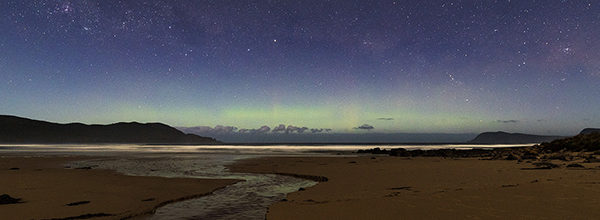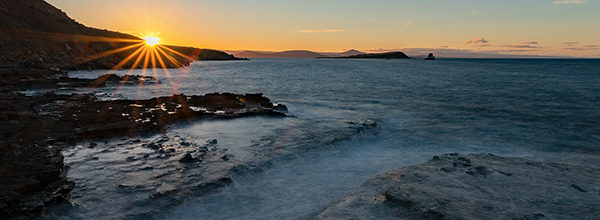Photographing the Night Sky: High ISO & the Pentax K5
Saturday night in Hobart was one of the clearest skies I’ve seen in a long time – and I’ve been keeping an eye out lately 🙂 so I packed the thermals & down jacket and headed for the top of Mt Wellington, where the temperature hovered between 0 & 1 degree (-6 with wind chill apparently!). The Milky Way, even just to the naked eye was absolutely stunning, and I almost didn’t notice the freezing conditions as I gazed at the show above. I spent the next couple of hours shooting the familiar constellations, such as the Southern Cross, Scorpius & Sagittarius. I also looked at the Magellenic Clouds & some star clusters in and around Sagittarius/Scorpius. The first shot below was a 30 second exposure, at ISO 80. The stars didn’t trail, and not much at all was visible of the Milky Way itself. Time to bump the ISO and see just what exactly the mighty K5 could do!
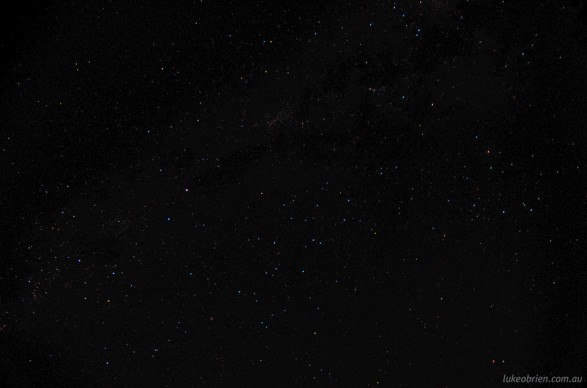
Southern Cross (bottom left) & Scorpius (top right) – 30 second exposure @ ISO80
The next shot below shows a different part of the sky – the Milky Way in the vicinity of Scorpius & Sagittarius (bonus points if you can spot them), and is a 30 second exposure using an ISO of 6400. The glow of the galaxy is strikingly beautiful at this ISO level.
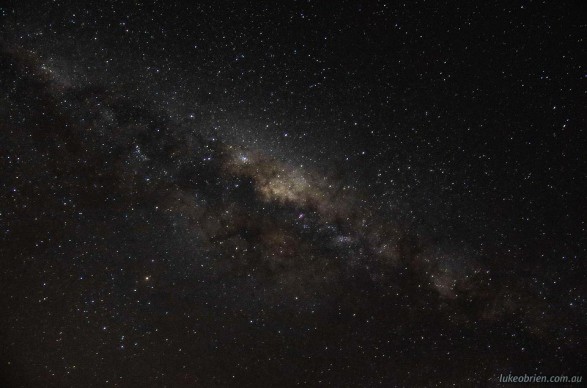
Milky Way, Sagittarius & Scorpius – 30 second exposure @ ISO6400
The second shot is a 20 minute exposure, at ISO 1600. The sky has an orange tinge due to the city lights of Hobart and the surrounding suburbs. Next time it might pay to use an even lower ISO setting when doing especially long exposures.
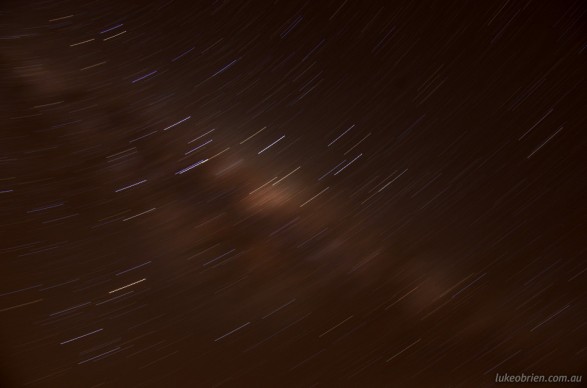
Milky Way, Sagittarius & Scorpius – 1226 second exposure @ ISO1600
The Magellenic Clouds were clearly visible, although less spectacular photographic objects.
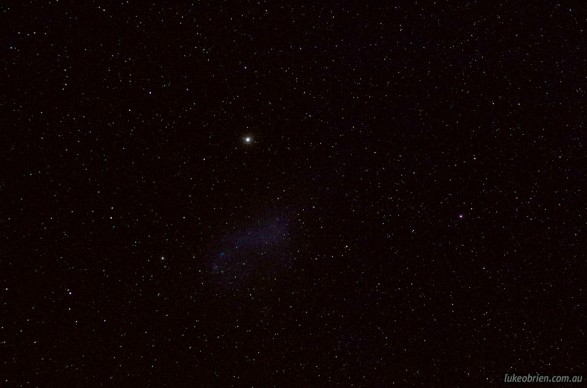
Magellenic Cloud
Why is ISO important? ISO is basically a measure of light sensitivity, so when dealing with a dark sky, and tiny pinpricks of light, an extremely sensitive sensor is needed. When it comes to sensitivity, basically the higher the ISO value, the higher the light sensitivity, so shooting at ISO 80 will not be as effective as shooting at ISO 6400 (or higher – just for the record, the K5 can shoot up to ISO51200). The trade off being that extremely high ISO settings result in high levels of noise – just how much noise depends on the particular camera model you use, and high ISO capability is one aspect that camera makers are always improving from model to model. This last shot, below, is at ISO12800, and while noise becomes an issue (although it must be said that I am perfectly happy with this image) the sheer number of stars, star clusters and other wonders of the cosmos visible shows the advantage of high ISO.
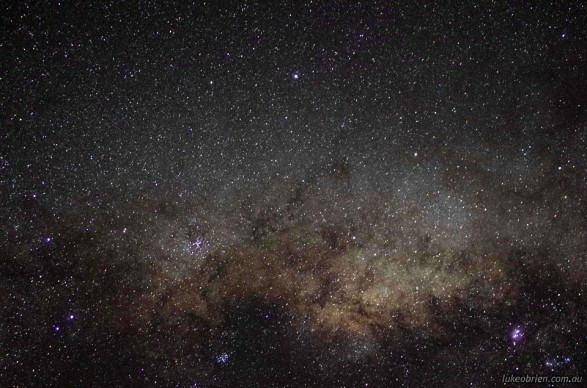
Sky near Scorpius – 10 second exposure @ ISO12800
The sky wasn’t the only light show worth looking at, as the night lights of Hobart spread out along both sides of the Derwent River was well worth a detour before heading back.
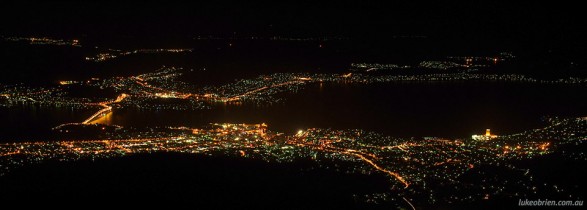
Hobart Night View from Mt Wellington
